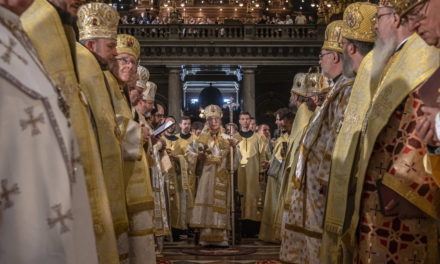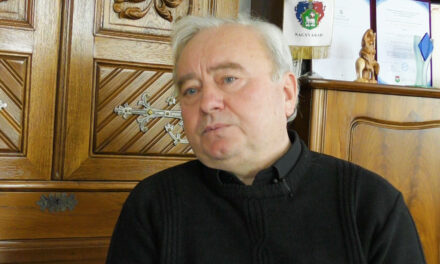A Pauline monastery surrounded by legends is being discovered in Balatonszemes.
A Pauline monastery once stood in the forest belonging to Balatonszemes, according to written evidence, since the 14th century. Based on previous records, the investigation into the monastery was initiated at the initiative of the Ordoszi Napsugár Foundation. The identification of the building and the excavation of the ruins go back more than ten years, but deputy mayor Viktor Mórocz, the project manager of the Balatonszemis Pálos Örökség, revealed: as a local child, bacon was fried several times in the area, and even then a few bricks were visible from the ground near the Bóbita spring.
As it turned out, the existence of the monastery was also indicated by the name of the forest: the locals call it the Forest of Friends.
No one knew its exact location, but the old people mentioned several times that there used to be a church in the forest. As a result, the mentioned foundation of the late Erzsébet Sebestyén created a "Pauline-spirited memorial" where the monks could once live and work, and in 2014 the Institute of Archeology of Pázmány Péter Catholic University began excavating the area of the supposed monastery, the Civil Archeology Fund, the Ordoszi Sunlight With the cooperation of the Foundation and the municipality. We note here: the sad actuality of the article is that dr. Archaeologist András Végh, the excellent leader of the excavations in Semes, recently passed away.
The Pauline Order is the only male monastic order of medieval origin, founded in Hungary, which is still active today: it had its heyday in the late Middle Ages, under King Louis and Matthias the Great, and then during the Turkish wars, their buildings were significantly damaged or destroyed.
After the expulsion of the Turks, the order began to develop again, but II. József disbanded it in 1786: for nearly 150 years, Pauline monks remained exclusively on the territory of Poland. In 1934, the Order of Paul started again in our country, and from 1950 the Communists banned their operation.
In Hungary today, there are roughly a few dozen Pauline monasteries or churches existing in the ruins of 40-50 or waiting to be unearthed underground.
The center of the order is currently in Poland, the headquarters of the Hungarian province is in Pécs. Hungarian Pauline communities operate in Budapest, Márianosztra and Petőfiszállás.
"The finds increased year by year, during the archaeological work the ruins of the building complex came to light, we got to know the dimensions and floor plan of the monastery," says Viktor Mórocz, who adds: the Pauline monks typically built their monasteries in wooded areas, led an independent lifestyle, did everything themselves, the designed the environment in a way necessary for their care.
They also had their own fish pond in Balatonszemes, and a 24-meter basement was hidden under the monastic building, which could once have been supported by a two-story building - this is inferred from the thickness of the foundation walls.
What is certain about the history of the Mindszent Monastery is that it was first mentioned in 1322, it was destroyed by a Turkish attack in 1555, and in 1744 visiting Paulists noted that they found high walls and that the tower was still standing, but the top was missing. The building materials were soon scattered by the people of the area, carved stones from here can be found in several buildings - among other things, in the Hunyady family's estate center in Balatonszemes, in the baroque granary under national monument protection, or in the baroque church of the nearby settlement in Szólád, says the project manager.
This is related to the recent discovery of the foundation stone of exceptional importance, which is considered unique even in international comparisons - emphasizes the deputy mayor.
As he already highlighted in a statement to another newspaper: "On the large square stone, we can see four Gothic letters with abbreviations, their meaning has not been deciphered until now. They probably refer to a prayer, perhaps including the name All Saints. It is possible that the text continued on other stones of the church. A similar find was not found in all of Europe! The discovery of this stone put the excavation in Semes at the center of international interest."
Real "treasures" were found during the excavations: a Venetian gold ducat, silver coins from the Sigismund era, a bronze crucifix, a fragment of a glass bottle with a blue thread and frilled collar decoration from Venice, carved stones, one of which has a male face, which may be a portrait of a monk.
Lead textile seals have also been found: these contain the marks of the merchants of the time, which functioned as origin and brand marks. Since such lead seals were also found in the northern cities of Italy, it is certain that international trade took place around the church and monastery!
Currently, a memorial site and, since 2022, a learning trail welcomes visitors here: during the nearly two-kilometer tour, information boards introduce the Pauline order and the interesting features of the Mindszent monastery to those with an entrepreneurial spirit.
Speaking about the future, Viktor Mórocz outlines optimistic plans: "After the archaeological work is finished, we want to raise the excavated foundation walls so that they stand out from the ground, we want to make the original building imaginable in reality. Last year, the three-dimensional reconstruction of the church was completed, which can be accessed on site and on the Internet using a QR code. We planned to create a hiking center together with the restoration of the spring. And on the nearby hill, I imagine a lookout point with a stunning panorama of the Balaton. I would like to make the surroundings of the Pauline monastery a living place again: the »Pálos kilátó« would connect the tourist attraction with the memorial site at the foot of it, and for this it may be important to include it in the system of Pálos Utak and connect it to the unified international pilgrimage route initiated by the Poles."
Cover image: Three-dimensional reconstruction of the church. Mindszent Pálos Monastery, Ordosz Sunsugár Foundation. Prepared by: Zsolt Fodor












